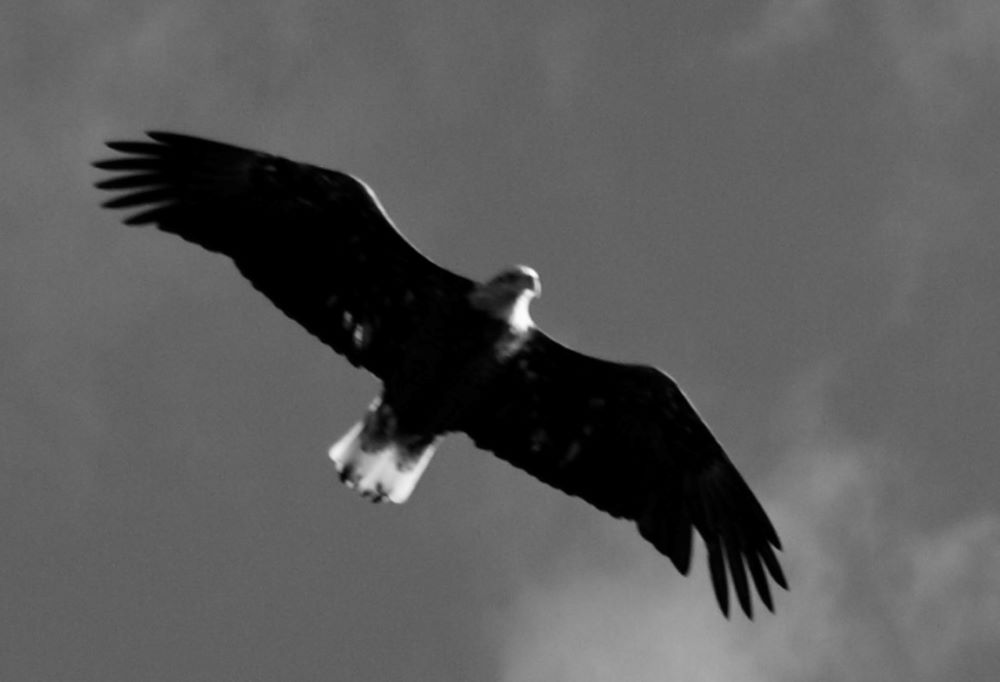Bald Eagles make a triumphant local comeback
Norfolk sightings excite birders
By Jude Mead

A bald eagle was recently spotted in the Norfolk skies.
The story of the bald eagle in New England is one of resilience and triumph over adversity. Once on the brink of extinction, the bald eagle has made a remarkable recovery thanks to conservation efforts and legal protections. In the 1960s, there were only a few pairs of bald eagles left in New England. Today, their numbers have rebounded significantly, with breeding pairs found in every New England state. In Norfolk, there have been many recent sightings, including at Wood Creek and along the Blackberry River.
According to Brian Hess, a wildlife biologist for the Department of Energy and Environmental Protection, the widespread use of the pesticide DDT caused a massive decline in bald eagle populations by contaminating their food. “That chemical bio-accumulated and led to reproductive issues with eggshell thickness,” says Hess. Eagle shells would crack during the incubation period, resulting in a dangerously low reproduction rate.
Hess explains that in 1992, decades after the use of DDT was prohibited in Connecticut, the state began establishing protected nesting territory for eagles to reproduce safely. Legislation such as the Endangered Species Act and the Clean Water Act and the founding of the Environmental Protection Agency provided a framework to clean up rivers and ensure the clean water that eagles depend on.
The two chicks that hatched from the first protected nest were closely monitored, but it wasn’t until 2009 that the bald eagle population began to climb. “Connecticut had 19 protected territories then, producing 31 chicks,” says Hess. “By this point, the Wildlife Division had begun to rely on volunteers to help collect the data necessary to monitor the population.” Nesting territories soon increased, and more people were routinely seeing eagles in every county and major watershed.
The nesting season of eagles happens in stages. “Eagles construct their nests in pairs, usually in late January or early February,” according to Hess. “This helps strengthen the pair to bond before the egg laying, which happens in late February and the first two weeks in March. During incubation, the male and female trade places on the nest every few hours until the eggs hatch, which can take roughly five weeks.” Once hatched, the eaglets must be kept warm and fed in order to survive the 10 to 12 weeks before they take their first flight.
The bald eagle’s journey from the brink of extinction to conservation success is a remarkable tale of perseverance. Conservation efforts continue to play a crucial role in safeguarding their populations. Hess says that as the number of bald eagles continues to grow, managing related information also becomes a challenge: “Without the dedicated observations of knowledgeable and passionate volunteers statewide, it would be virtually impossible. However, struggling with a growing number of nests to monitor is a wonderful problem to have.”
To observe bald eagles in their natural surroundings, Hess suggests a walk along the Connecticut River. He notes that everyone can help gather data by reporting an eagle nest or noticing nesting behavior, such as spotting an eagle carrying sticks. Any findings can be sent to brian.hess@ct.gov. He emphasizes that it is important to avoid disturbing active bald eagle nests, to be conscientious in the use of rodenticides and to consider using non-lead ammunition for hunting. He also reminds everyone that bald eagles are protected by state and federal law.
